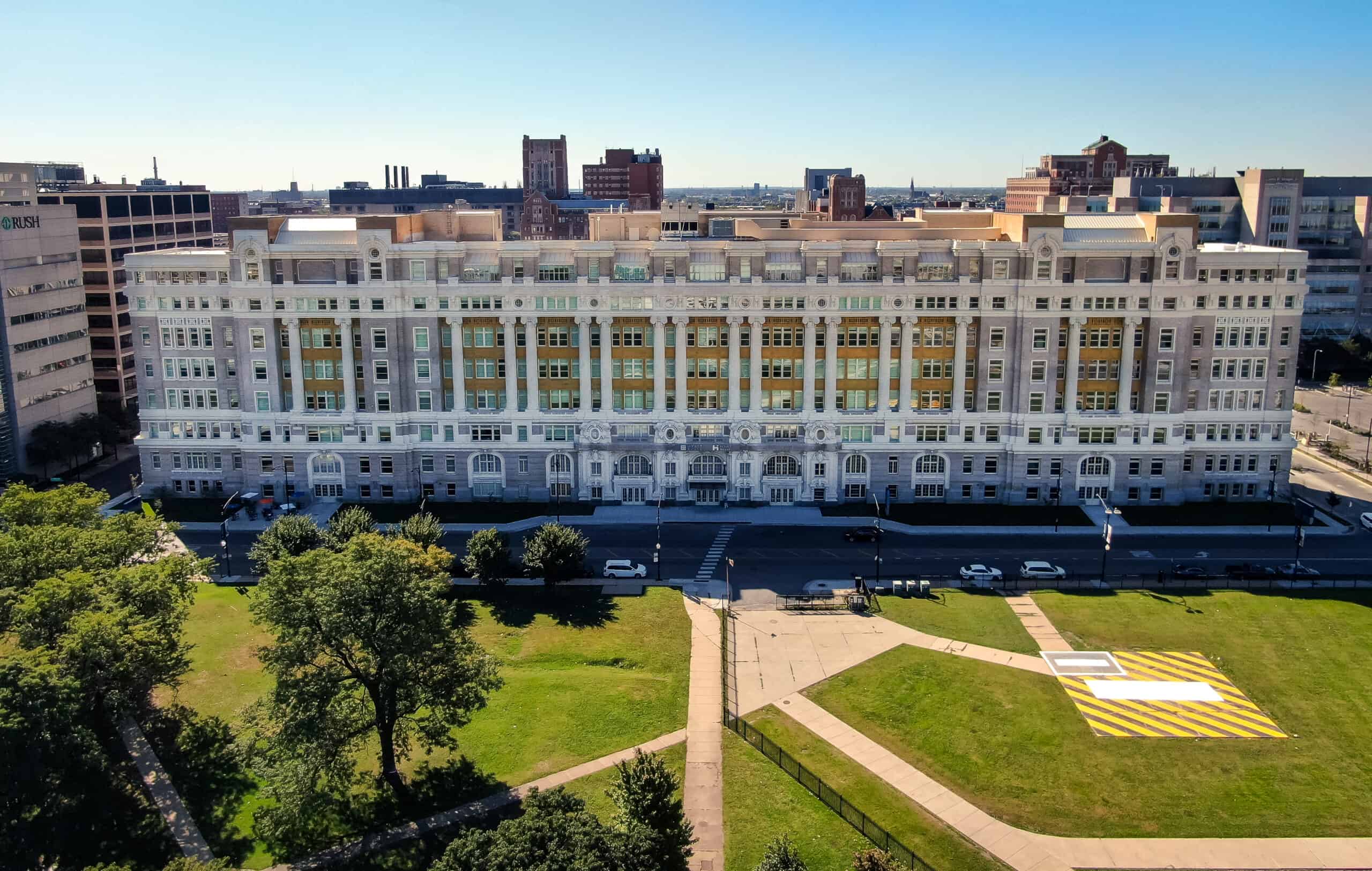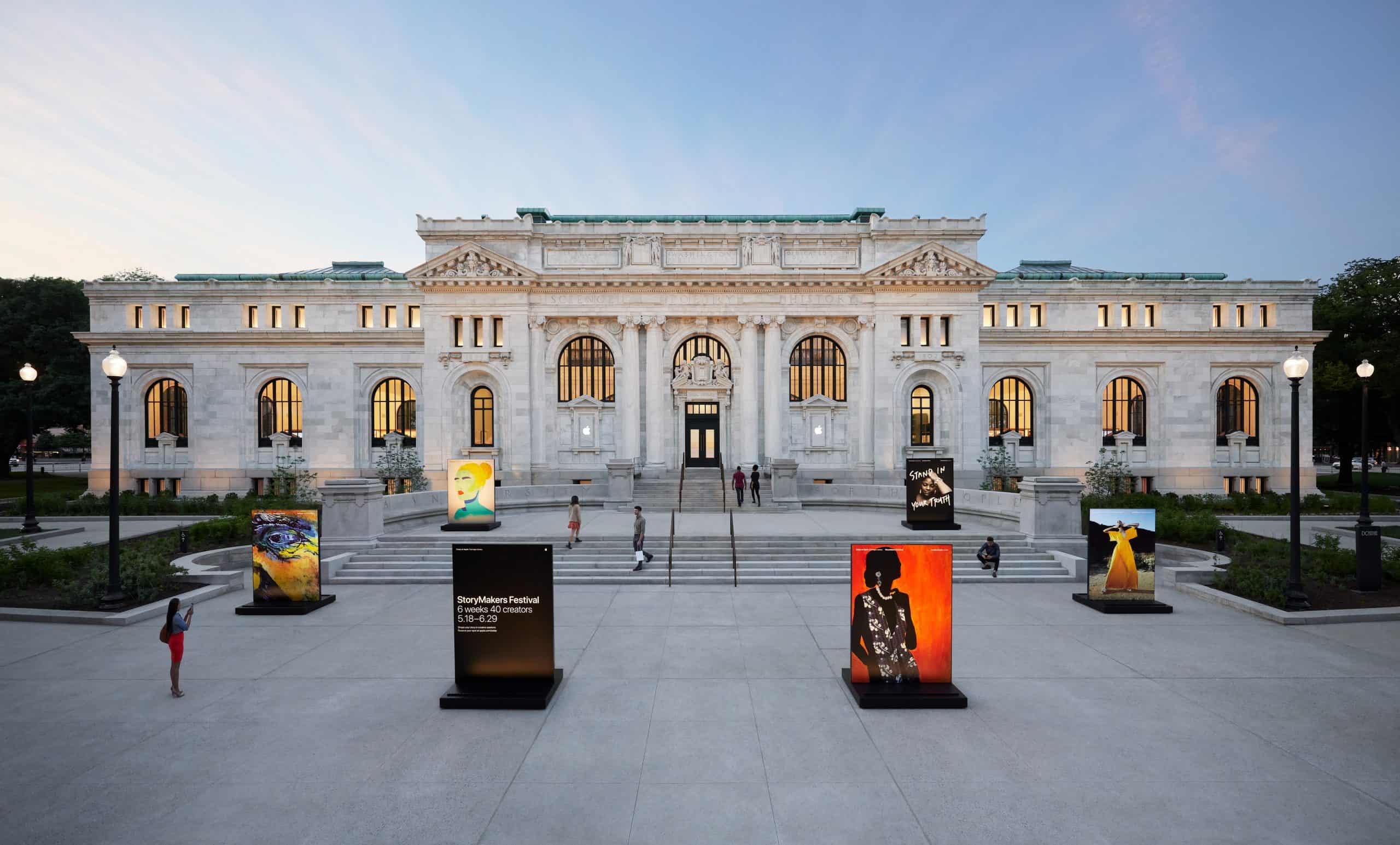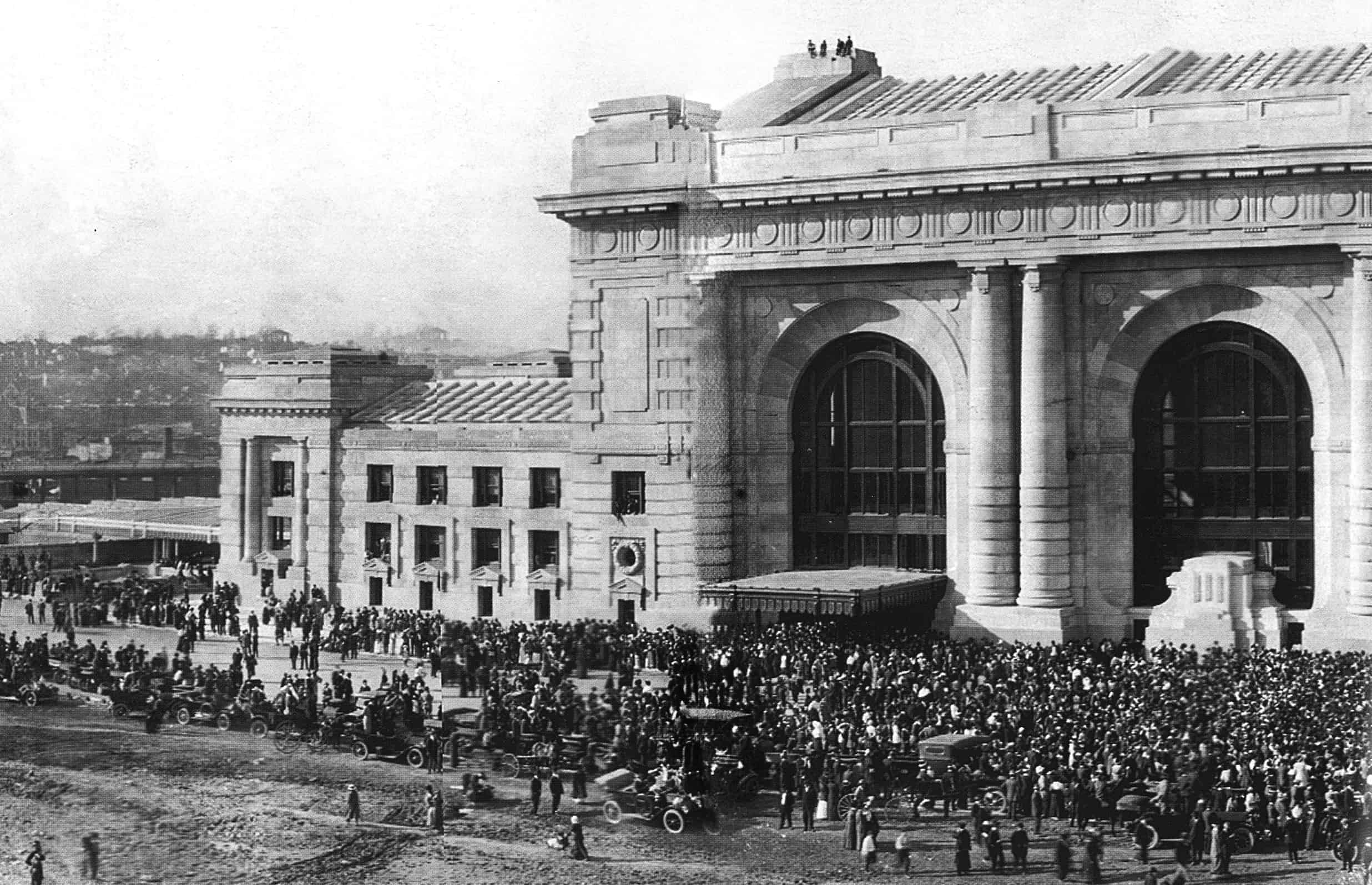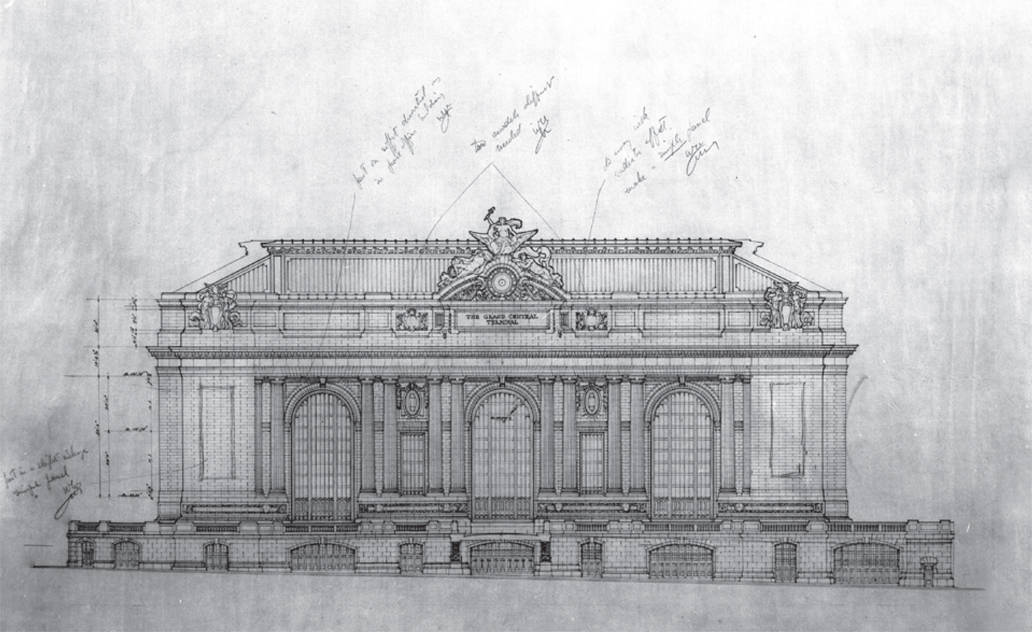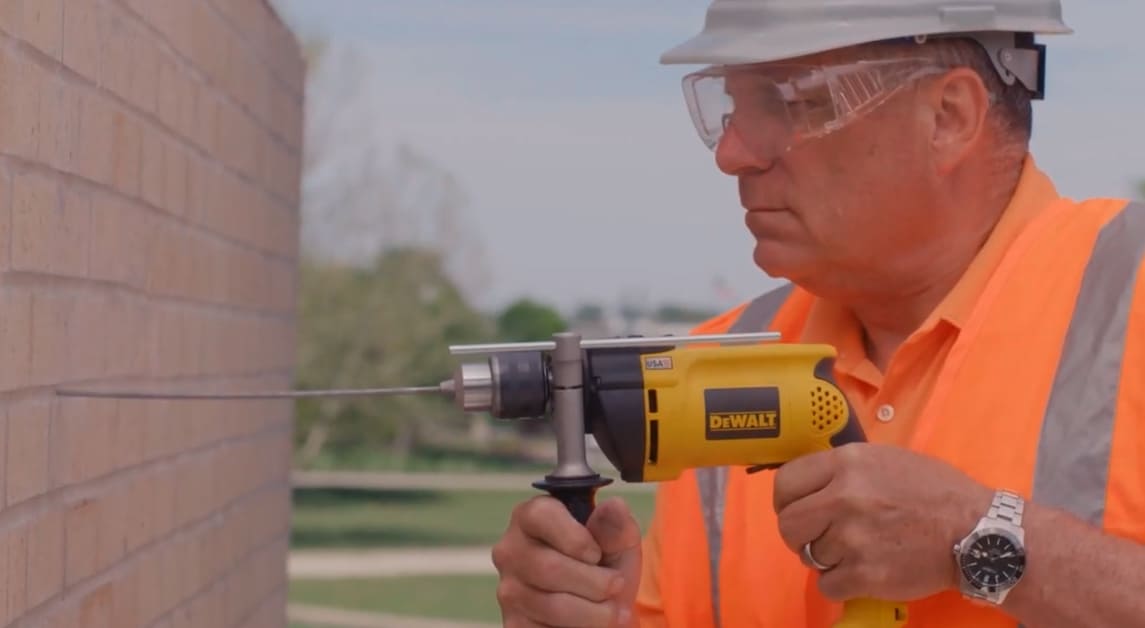Kansas City, Mo. | 1994
The sounds of trains and travelers had died away. The vast lobby and cavernous waiting room were silent but for the occasional echo of pigeons and the furtive skittering of rats. The enormous arched windows stared lightlessly at the city which had once revolved around its beautiful, bustling Union Station.
But even as the monument to the vanished heyday of American railroads lay dark, cold and neglected in the mid-1990s, plans were underway to bring the Kansas City landmark back from the brink. Today, as home to the Kansas City Museum's "Science City," Union Station is filled with light, color, warmth and crowds once again.
Exterior cleaning | Summer and Fall 1997
The station's physical journey back from the edge began in August 1997 with a vigorous cleaning of its Indiana limestone exterior. A patchwork of algae, brown atmospheric soiling and water stains covered the thousands of square feet of vertical stone, according to Dale Zoerb, president of Minnesota-based Building Restoration Corporation.
Cornices and overhangs were black with carbon and soot -- up to 1/8-inch in some places. Gypsum crystals had sprouted under some of the cornices.
"The stone was in pretty good shape considering its age and the way it had been neglected," Zoerb commented.
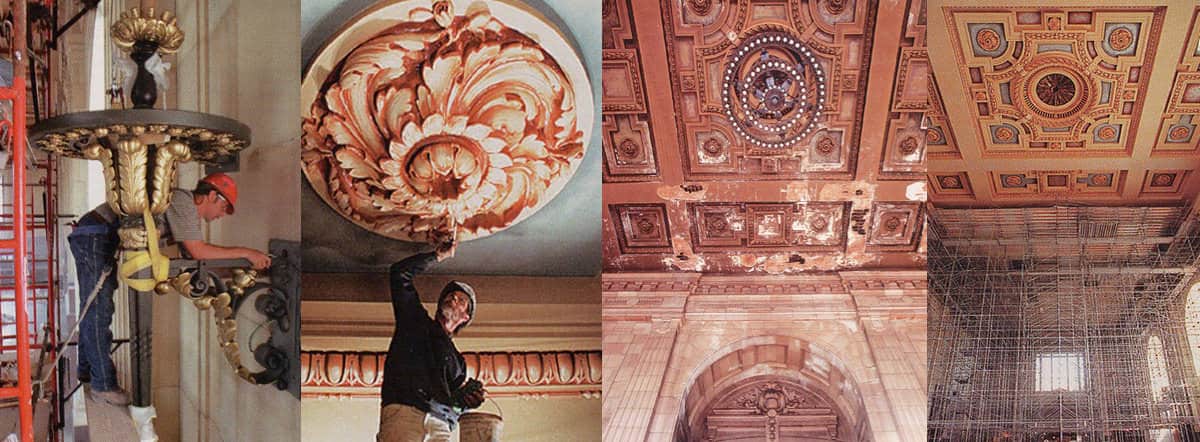
"Its main problem was that it was so dirty, and there was so much of it to clean. The building is the size of a small city."
Although the original specs called for cleaning the station with ionized water, test panels revealed better results with a custom blend of PROSOCO's Sure Klean 766 Limestone & Masonry Prewash, followed by Limestone & Masonry Afterwash.
"We let the prewash dwell about 30 to 50 minutes and the afterwash 3 to 5 minutes," said BRC Job Foreman Todd Pastorius. "We could see immediate results, even before the surface dried. The difference was literally black and white -- well, off-white, really, since that was the original color of the limestone."
"We saved the owners thousands of dollars in labor costs by using the PROSOCO cleaners," Zoerb explained. "The prewash and afterwash let us get the job done much more quickly and effectively."
Sure Klean Asphalt & Tar Remover and 859 Paint Stripper (today's equivalent is SafStrip) also saw action in isolated locations on the roof and around windows, Zoerb said.
Though the cleaning was straightforward -- brush and low-pressure spray application, followed by a 1,000-psi fresh water spray rinse, the building itself provided plenty of challenges.
An underground viaduct ran the length of the station's front, Zoerb explained. It was unstable, so workers couldn't drive their trucks up to the site to upload. Instead, every piece of equipment was hand-carried to its place.
The unstable viaduct also meant heavy scaffolding was out. Instead, they rigged tons of custom-engineered swinging stages from the roof. The building was so big, the workers used a mile of water hose for washing and keeping the surface prewet during cleaning. (The viaduct has been rebuilt. It's now underground parking.)
Another challenge was the schedule. "We cleaned a lot of that building by floodlight," Zoerb recalled. "We cleaned at night and on weekends to protect nearby traffic and parking."
"Kansas City's Union Station is a significant building, and it was an honor to be involved in its restoration," he added.
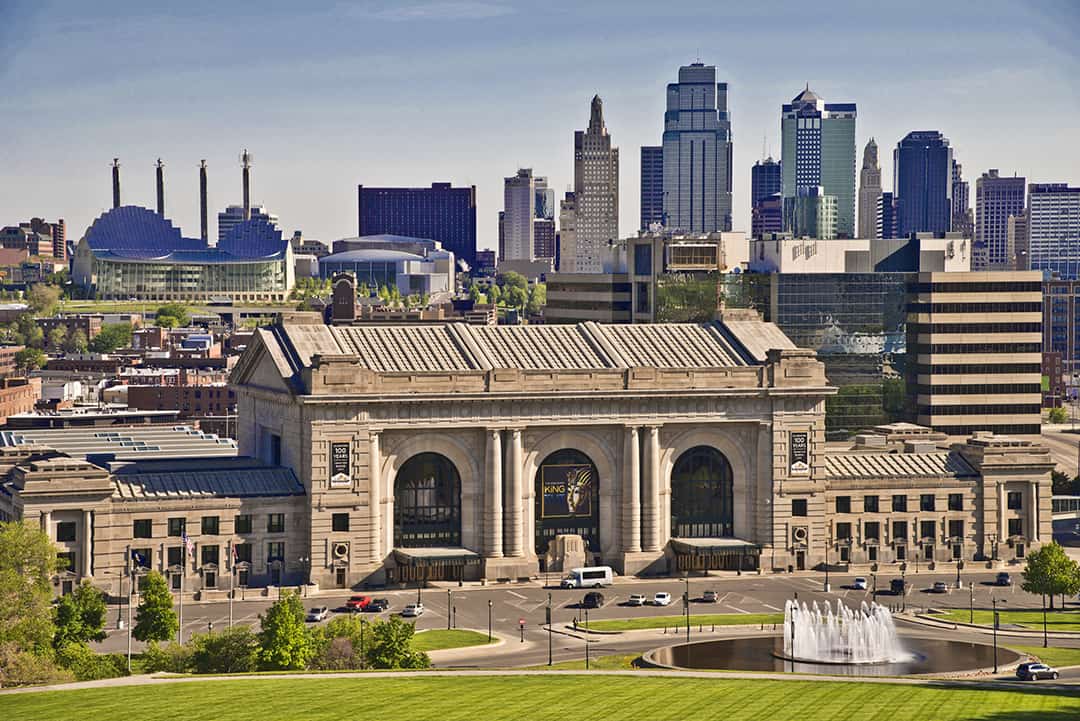
Interior cleaning | Spring 1998
"Black."
That was Frank Halsey's one-word description of Union Station's interior walls. The Kasota limestone, marble, brick and glazed terra cotta walls -- about 116,000 square feet all together -- were blanketed with decades of soot from trains, and smoke from millions of cigarettes, cigars and pipes. Water stains were everywhere.
Halsey, then the vice president at Kansas-based Mid-Continental Restoration, was addressing a couple different scopes of the project. His company was called out to do some additional cleaning on the exterior of the building. And there were also several obstacles to clear to get the interior cleaned.
Delicate masonry in the grip of tough stains led the list. The cleaners had to be aggressive enough to dissolve soot, yet gentle enough not to etch delicate limestone. Polished marble trim throughout the station needed protection while it awaited its own turn to be cleaned by another company.
Because the job was indoors, rinse water had to be minimized and contained -- there was already too much water damage to the station, Halsey said.
PROSOCO and Mid-Continental answered all three questions in short order. PROSOCO developed a brand new cleaner, custom-targeted for the station's unique blend of stains and surfaces.
"It worked so well, we immediately drafted it into general service," said Mike Dickey, then the regional sales manager for PROSOCO. "We didn't even wait for a product launch."
Marketed then as Sure Klean 1922 Hard Surface Cleaner (known today as EK 2010 All Surface Cleaner), the new creation got right down to business dissolving the contaminants.
"I had no idea how beautiful those inside walls were until I saw the cleaned version," Halsey said. "They were a rich, uniform, buff color."
Crews prewet the walls before applying the 1922 with masonry brushes. The cleaner was allowed to dwell 10 minutes before rinsing with 180 degree F water at 800 psi.
In spots where soot and other deposits had formed thick crusts, workers used Sure Klean Light Duty Restoration Cleaner.
"Light Duty Restoration Cleaner packs the cleaning horsepower of conventional acidic formulations, but with drastically reduced corrosiveness," Dickey said. "So it was perfect for the occasional spots where we had to literally knock off layers of grime, still keeping in mind the fragile surface beneath."
The operation generated more than 300 gallons of cleaning wastewater daily, according to Halsey. Basins caught the water as it came off the walls. It was transferred to 55-gallon drums and neutralized with lime, then released to the storm sewer.
Workers protected the station's marble trim with Sure Klean Strippable Masking. The white liquid goes on like paint, then hardens into a protective shield. When the cleaning is done, the masking is removed in sheets or pieces.
"The marble-cleaning company actually got a little bonus from the strippable masking," Halsey said. "When we pulled it off, we found it had taken along some of the dirt from the marble surface."
Grand opening | Autumn 1999
After more than two years of work, a sparkling Union Station opened Nov. 10. Opening day's estimated 5,000 guests were just the beginning as the station braced for an expected 1 million visitors its first year.
All traces of neglect, decay, toil and sweat were gone. Trains were back, if only in a Science City exhibit. The combination of science center, theme park, retail, dining and theater again offers an exciting central gathering place for Kansas City and its visitors.
Ranked among the nation's most important preservation projects, Kansas City's Union Station is back on track.
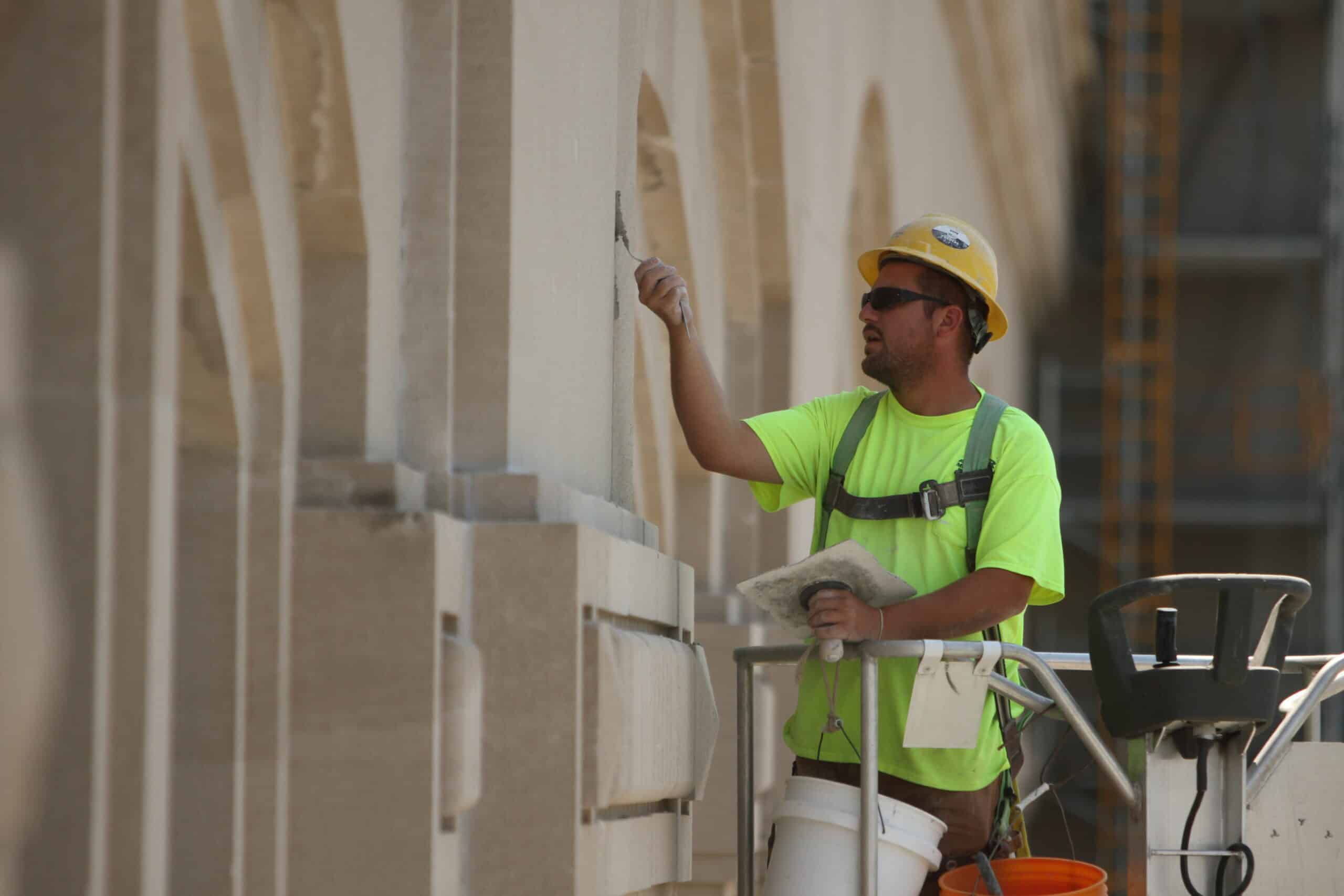
2017 Update
Nearly 20 years after its grand re-opening, Union Station's limestone exterior was ready for another cleaning. In 2017, Mid-Continental Restoration got the bid to clean the entire limestone surface with ReKlaim and Weather Seal Natural Stone Treatment. Isolated areas were treated with Conservare H100 prior to the application of Natural Stone Treatment, according to longtime PROSOCO rep Mike Dickey.
![]()


